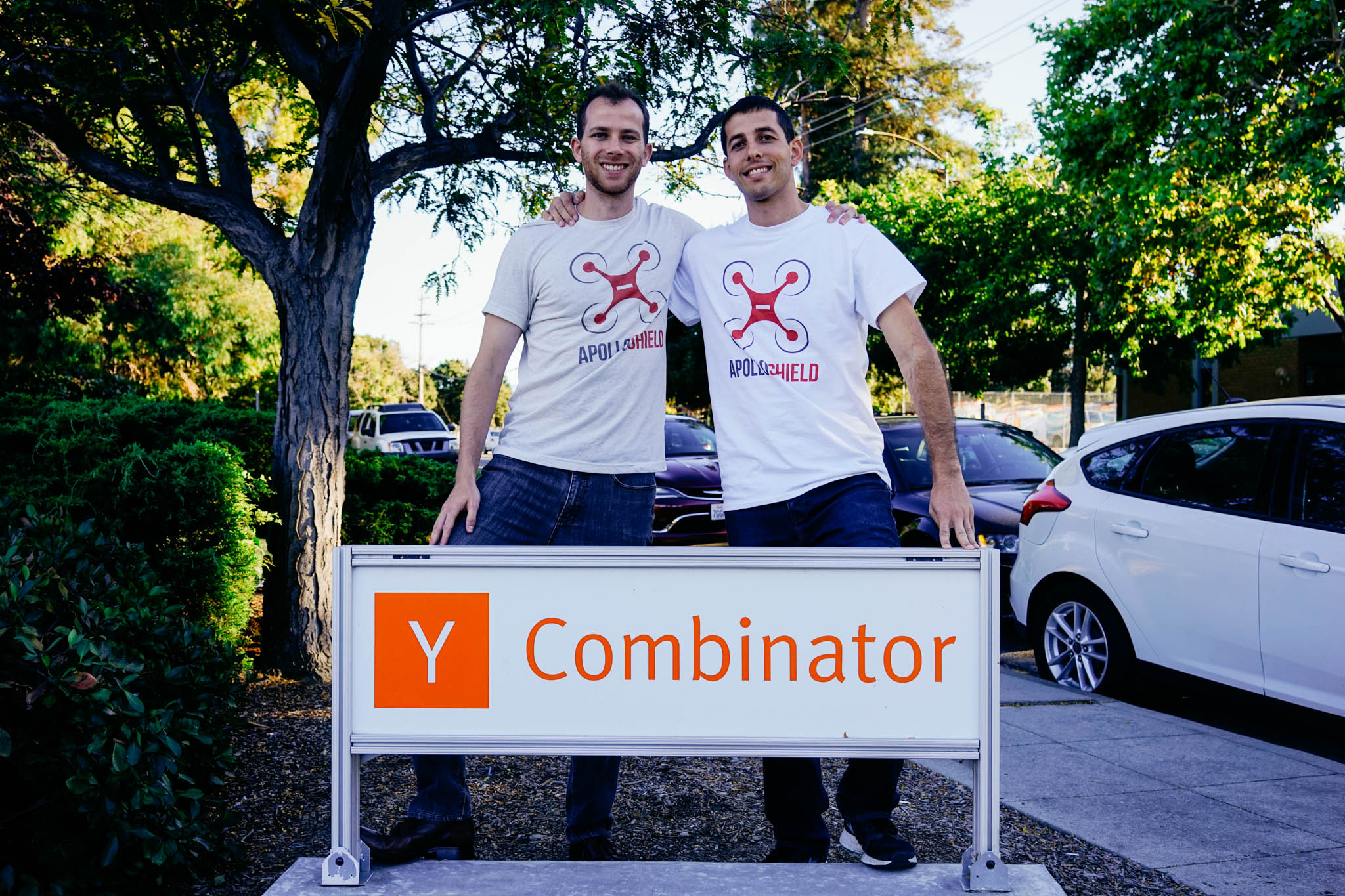
ApolloShield identifies and intercepts unauthorized drones that are in your airspace, forcing them to return to their controller. We sat down with co-founders, Nimo Shkedy and Gilad Beeri, to talk about how they’re making stadiums, prisons, and other spaces safer.
YC : How did you come up with ApolloShield?
Nimo: We started thinking about the idea after Israeli supermodel Bar Refaeli had her wedding declared a no-fly zone, causing a huge media outrage in Israel. It turns out she had tons of paparazzi drones at her wedding. We thought it could be interesting to hack into them and make them go away.
During the months after the wedding, friends kept sending us endless links to articles about drones causing problems in prisons, soccer games, airports and nuclear facilities etc. And one day we decided it's a problem worth solving and started working on it full time.
YC : How does ApolloShield work?
Nimo: It’s a piece of hardware that can detect any commercial drone communication in its vicinity. During this detection phase, we’re able to pinpoint every single drone through its unique ID and determine which drones are supposed to be there and which ones are not.
The second thing ApolloShield can do is tell a drone to go home. When we trigger that command, it’ll return back to where the controller is and land safely.
Gilad: Both of these features have big implications. By grabbing the ID, we’re able to give authorities leads to help them find the individual controlling the drone. Even if they’re not able to catch the person immediately, they can go to the manufacturer to find out where the drone was purchase. Then from the store they can then find out who bought that exact drone.
Because we’re not jamming any signals, ApolloShield doesn’t interfere with any communication channels or cause other drones to malfunction. Most of the comparable products out there are designed for military purposes or only have the detection part. So, even if you do know there’s a drone in the vicinity, all you can really do is go inside and hide.
YC : Could someone just shoot down a drone instead?
Nimo: A guy from Kentucky actually did that and he ended up getting sued. He ended up winning the case, but that doesn’t really make the situation any less dangerous. When you shoot a drone, the drone will crash somewhere and that is entirely out of your control. It can land anywhere and hurt people and cause property damage. This is especially scary when you’re in a stadium with thousands of people and any of them could be hit.
YC : That makes a lot of sense. Can you elaborate on how you send the drone home?
Gilad: Each drone has a built-in command in its communication protocol that tells the drone to return back to the controller. We mimic the controller’s signal and tell it to return home. The challenging part of this is that each drone has its own language and in the world of drones, the models change very rapidly.
YC : So you have to figure out how to intercept each new drone that comes out?
Nimo: Yeah, which is a blessing and a curse. It’s a curse because you have to invest a lot of time and energy into figuring out what techniques to use in order to detect and intercept them. But it’s a blessing because once we own this space, no other company will be able to compete with us. It’s basically like Norton Anti-Virus. They’ve spent years doing R&D and now have years of research to catch all kinds of viruses. If the new virus is slightly different, it’s going to be easy for them to catch it. If it varies a lot, it’s going to be slightly harder but they’ll still be able to do it. It’s the same thing with drones.
YC : What’s the range of ApolloShield?
Nimo: We have varying models based on customer needs. The most basic one covers about 1,500 ft. But there’s no limit to the space we can cover. We recently did a pilot with a national stadium and we covered the entire space with just four of our boxes.
YC : What will ApolloShield look like in the future?
Nimo: Right now we’re focusing on making stadiums and prisons safe from drones, but there are many other spaces where an anti-drone system makes sense. These spaces will have varying risk factors so we plan on tailoring ApolloShield to their needs. For instance, an airport will need to scan miles in each direction while a private resident only needs a few hundred feet. But any place that can be infiltrated by a drone will need anti-drone protection.
Gilad: Drones are just flying robots and there are going to be a lot of robots in the future. Some of them will fly, while others might swim. We have no idea what these robots will look like but we do need to make sure that these robots don’t get out of hand.